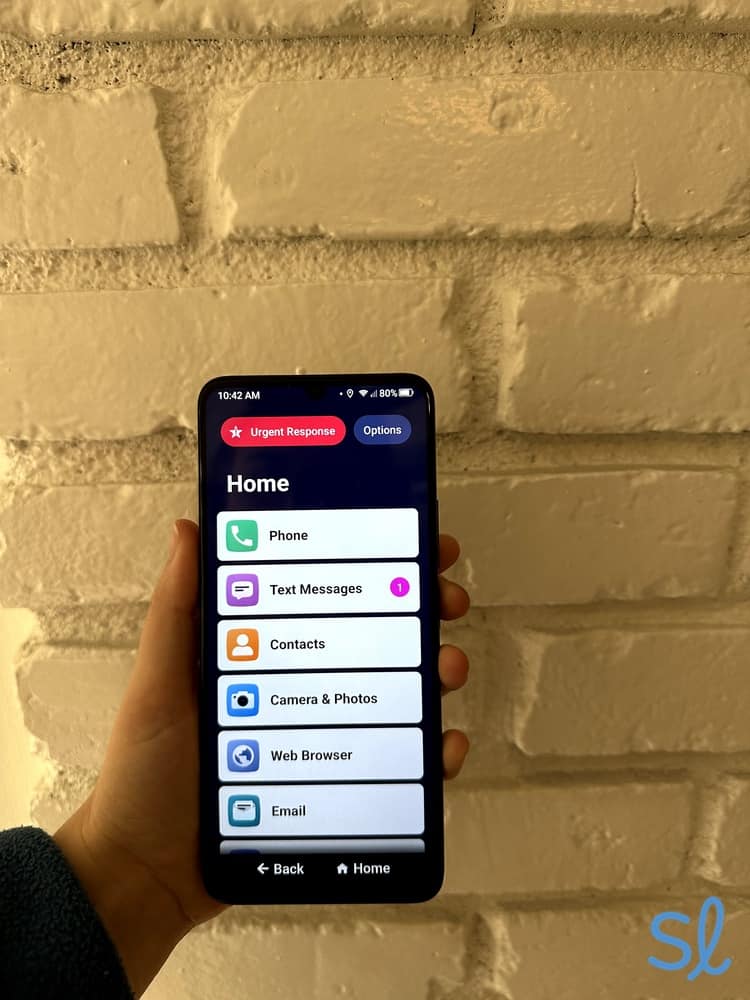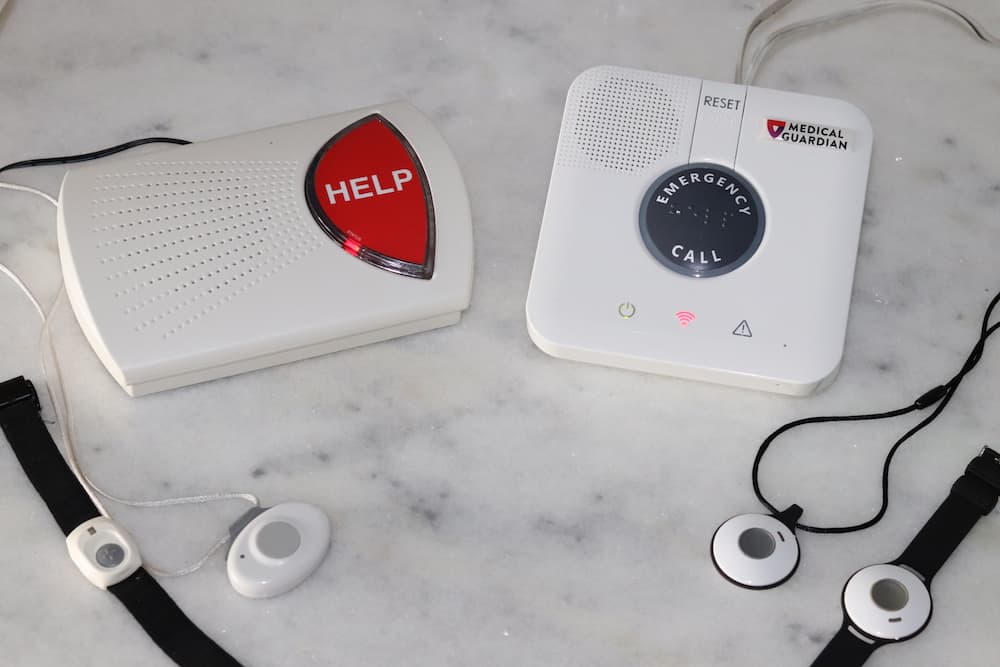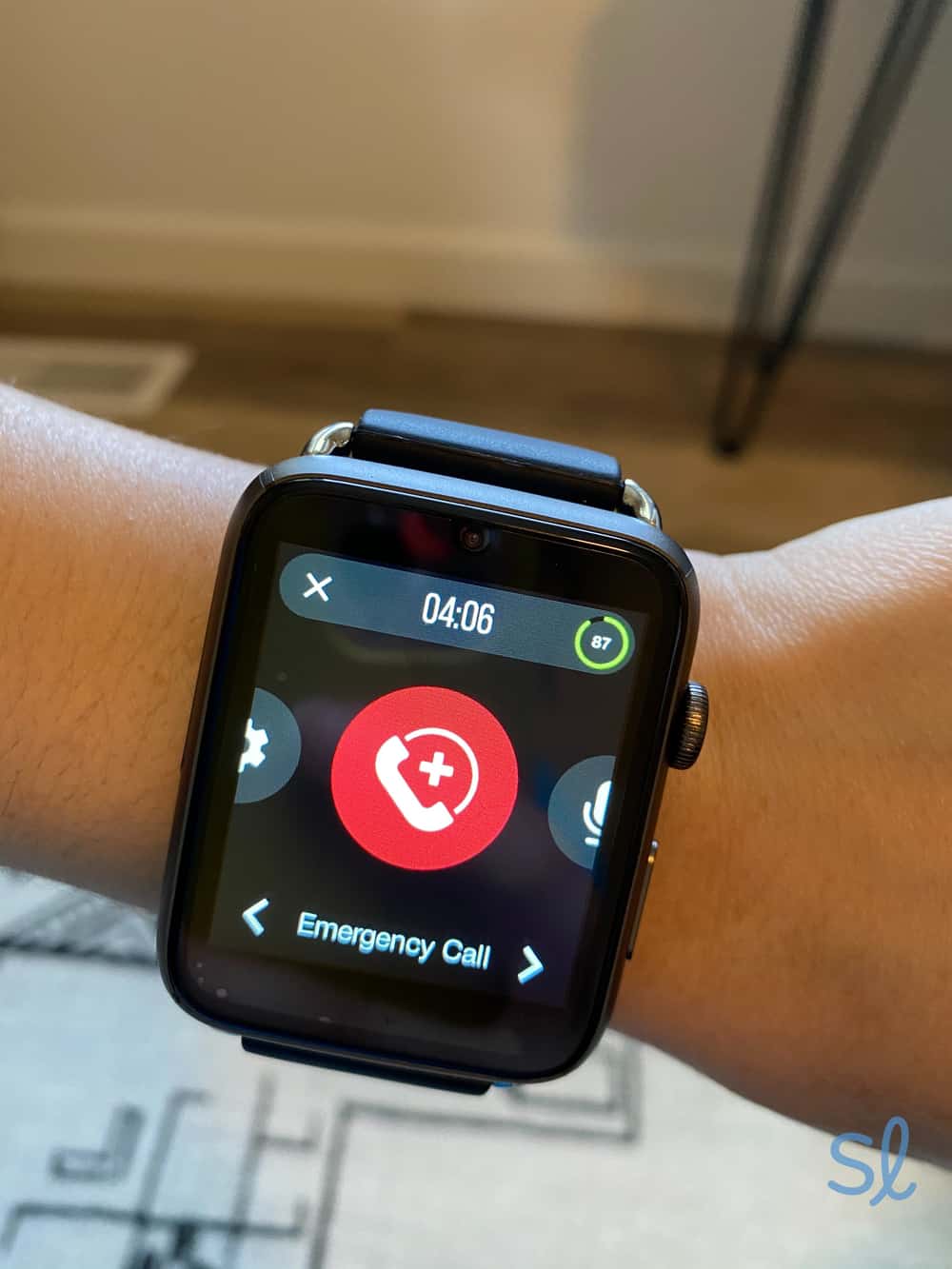Lively Medical Alert System Review
Lively’s affordable systems, quality customer service, and month-to-month plans make it one of our favorite medical alert systems in 2025.
Our senior tech experts logged over 50 hours testing and evaluating the Lively Mobile2. We spent a week using the system at home and on the go. Our team compared our experience to customer reviews to provide a well-rounded picture of the system. While using the Lively Mobile2, we evaluated it for several factors, including the following:
- Price and value: We researched and compared the affordability of Lively’s packages for their value and features. We considered monthly rates, the cost of add-ons, any additional fees, and seasonal promotions.
- Customer service: Being able to contact customer service when you need it is a priority for seniors. Our team contacted Lively’s response team several times to get our questions answered and assess the team’s effectiveness. We measured modes of contact, availability, and response times, as well as friendliness and professionalism.
- Response times: We made 10 test calls to Lively’s emergency response team to find average response times. Our team also initiated 10 test “falls” to find average response times and accuracy for fall detection.
- Reliability: We tested our system in various locations at home, on walks, and while traveling to determine the system’s reliability and signal strength.
- Caregiver features: We highly rate systems that offer features for caregivers and loved ones to keep a closer eye on the user. Our team tested out Lively’s mobile app and its features to assess its features and usefulness.
Head to our medical alert system methodology guide for more information on our testing process.
Medical alert systems aren’t the large, clunky things you remember from years past. They are sleeker and have more features to keep older adults safe. One of our favorite modern medical alert systems, the Lively Mobile2, offers simple on-the-go protection.
You could also consider one of Lively’s senior-friendly phones, the Jitterbug Smart4 and Jitterbug Flip2, both of which have medical alert features. Some older adults would also benefit more from the Lively Mobile2’s extra safety features, such as fall detection and wearable protection. In this review, I’ll break down my experience with the device. Read on to learn why Lively offers one of the best medical alert systems on the market!
As SeniorLiving.org’s resident tech expert, I’ve tested many medical alert systems and senior-friendly cell phones over the years, including several Lively products. There are a few more high-tech and affordable options on the market, but I was pretty pleased with the Lively Mobile2. In this review, I’ll break down my experience with the device. Read on to learn why Lively offers one of the best medical alert systems on the market!

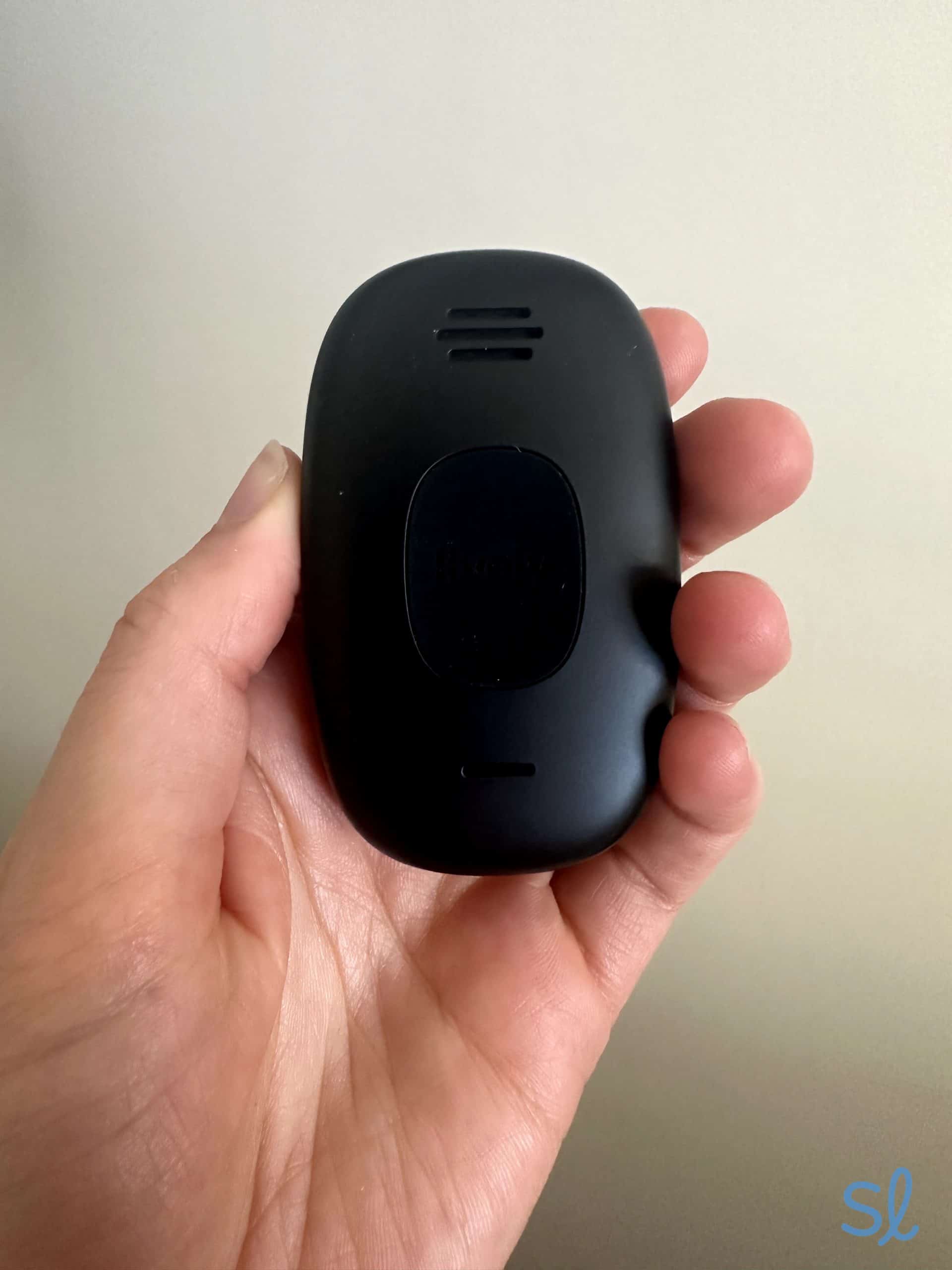
Trying out the Lively Mobile2
Pros About Lively
- No long-term contracts
- U.S.-based monitoring centers
- Senior-friendly phones
- Affordable mobile medical alert system
- Health and safety features
- Fall detection available
- 24/7 access to Lively’s Urgent Response team
- Lively Link app for caregiver monitoring
- Water-resistant design
Cons About Lively
- No landline medical alert systems
- Some features require a mobile app
Lively Mobile2 Pricing
The Lively Mobile2 is the cheapest device Lively offers, and it’s great for seniors who want a Lively package that isn’t attached to a phone. It costs $79.99 and comes packed with great features in a small, lightweight device. Plans start at $24.99 per month for the Basic package or $34.99 for the Premium package. (I’ll get into the details of the packages and what they offer later!) There are no hidden fees, long-term contracts, or cancellation fees like some companies do. For comparison, Life Alert requires a three-year contract. You can also add fall detection to the system for $9.99 per month, an essential feature for people at higher risk of falling.
Pro Tip: On a tight budget? Check out our list of the best affordable medical alert systems to compare your options.
Unlike Lively’s other devices, the Lively Mobile2 isn’t a phone. That means it doesn’t offer internet, data, or talk and text. It also means you won’t pay extra for all that. Sometimes simple is better, since you may not need all those additional features! If you’re interested in a Lively phone, check out our Jitterbug phone review.
The Buying Experience
I found Lively’s website user-friendly and informative. Before making an online purchase, I suggest calling customer support to answer any questions you have. Lively’s customer support agents can also give recommendations for the device that best suits your needs.
I’ll let you in on a little secret: You can unlock some savings by speaking with a representative. When I called, a representative named Shirley told me about a promotion expiring at the end of the month. High-five, Shirley!
Setting Up My Lively Mobile2
My Lively Mobile2 arrived in a neatly packed white box, which contained a charging dock, lanyard, alert device, and a holder/clip accessory. It also came with a small booklet and brochure. The instructions were simple and were broken up into easy-to-follow steps.
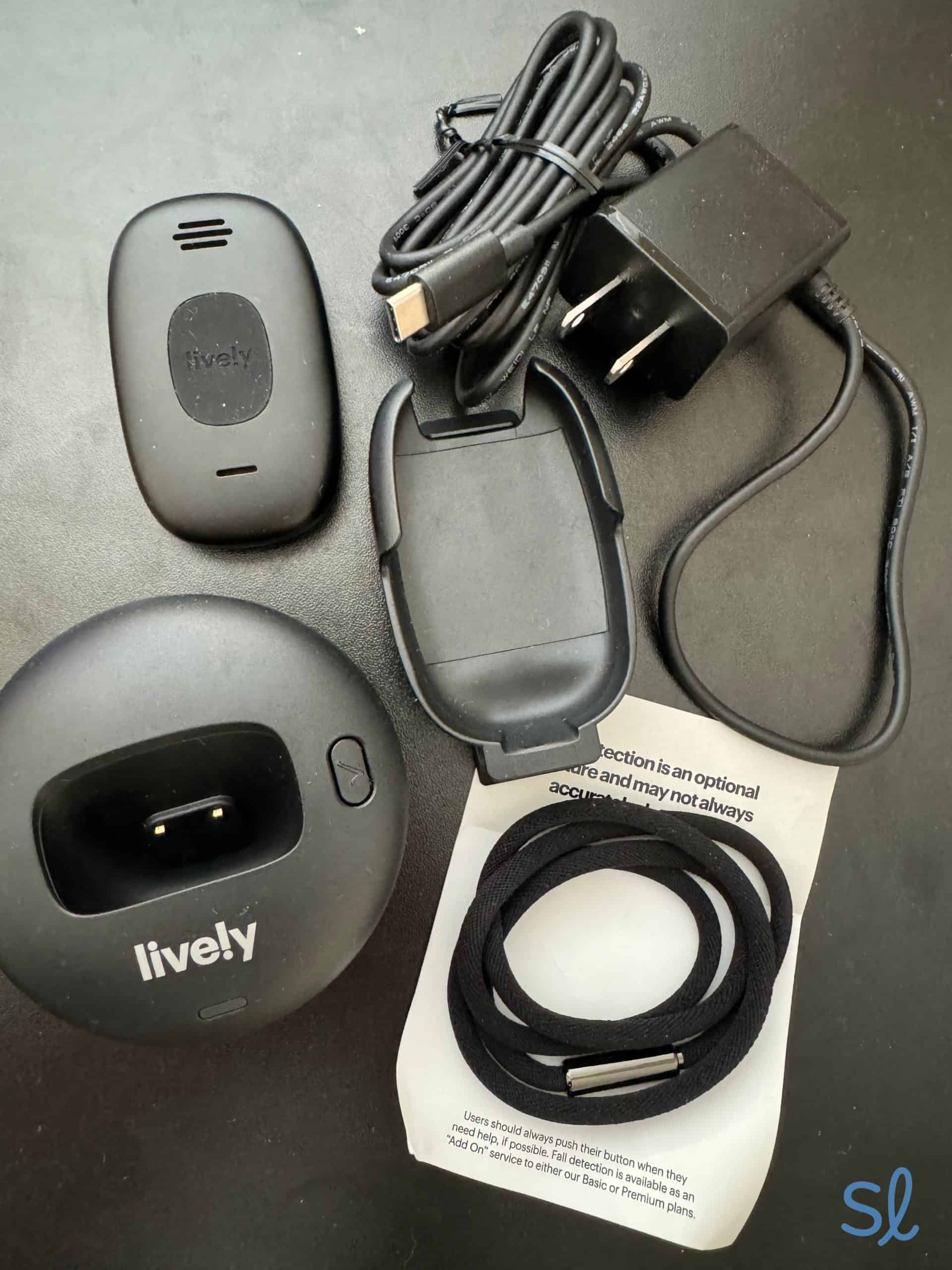
Unboxing the Lively Mobile2
Activation
To start the setup, you can either call 1-888-900-1369 or visit lively.com/activate. Lively charges a $35 activation fee, which I’m not a big fan of. You can shave off $10 by activating online, which I chose to do. I went to the activation website, and the prompt asked me to select the Lively Mobile2 product and enter my ZIP code. I was then given a form to fill out that asked for my product’s serial number to activate the device. I found the serial number on the box.
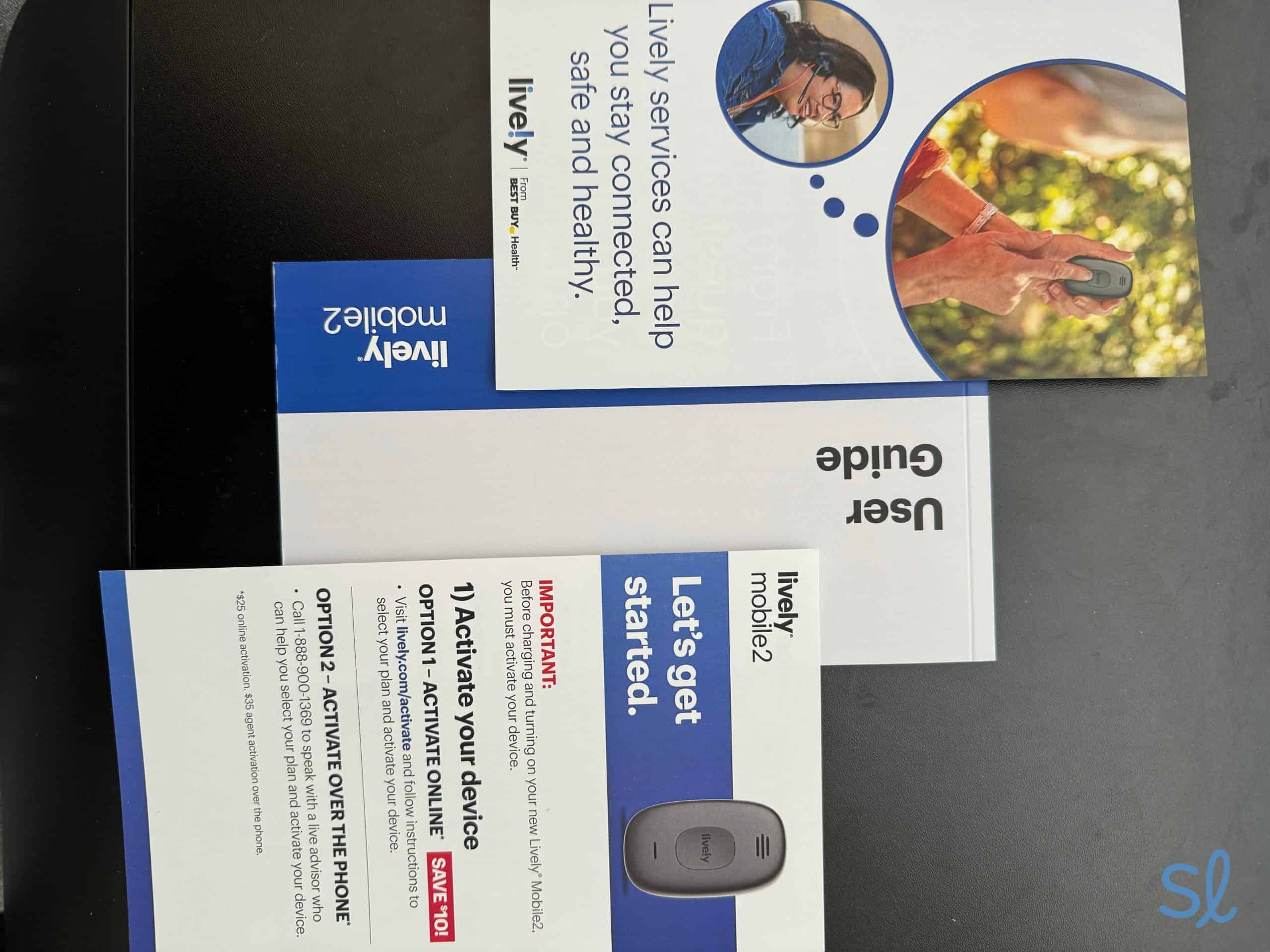
Lively provides clear instructions for activation and use
Charging the Device
Charging was very straightforward. The process went exactly as the instructions explained. I attached the cord to the charging dock and plugged the dock into the wall outlet. I then inserted the Lively Mobile2 into the base to charge. After several seconds, a voice said, “We’re setting up your device. Please wait.” After a few more seconds, it repeated the statement. When the charge was complete, it said, “Welcome to Lively.”
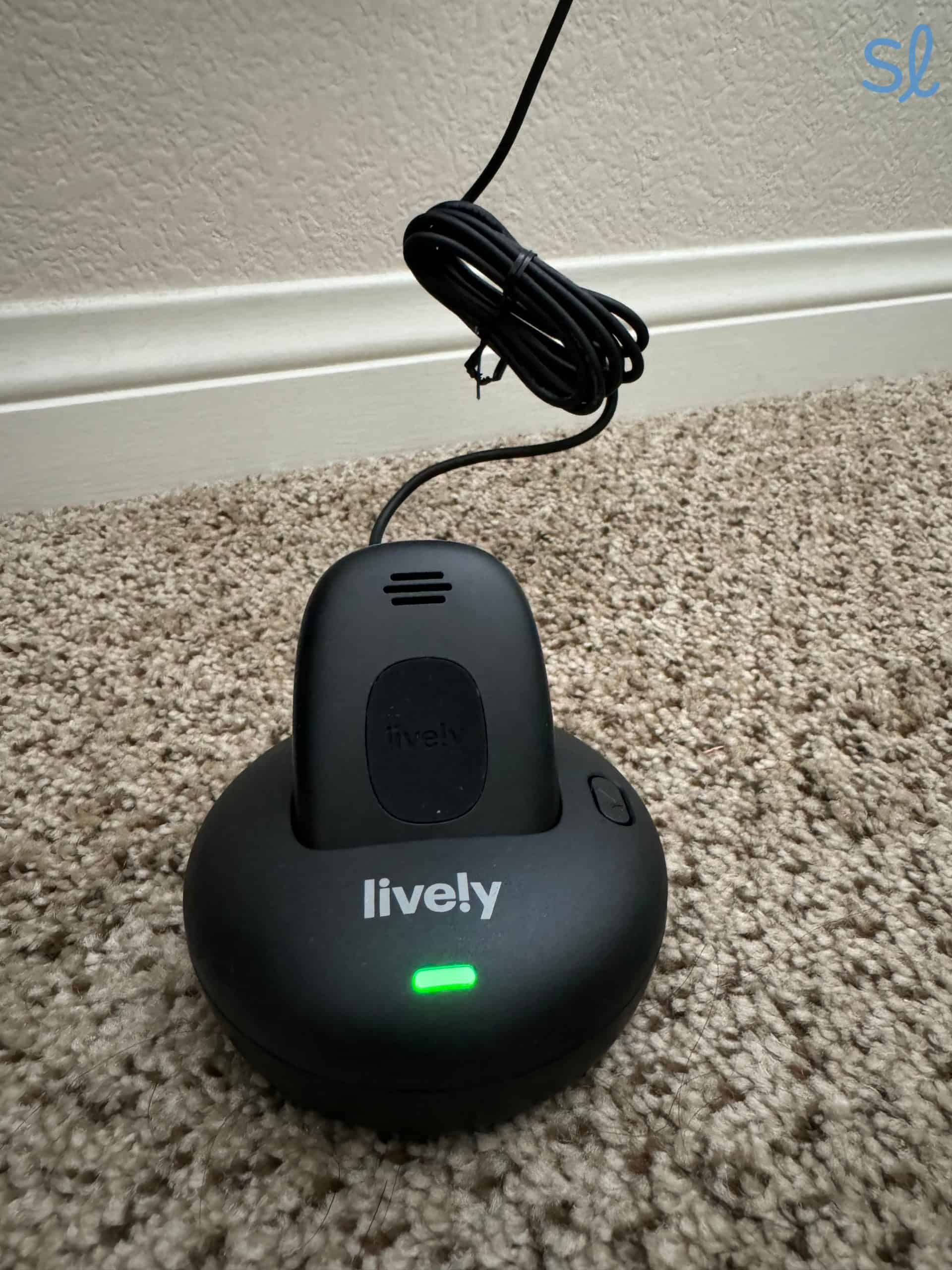
Charging the Lively Mobile2
The Lively Mobile2’s battery lasts up to 40 hours. That’s pretty decent, but some systems last even longer. LifeFone’s At-Home & On-the-Go, VIPx system, for instance, lasts up to 10 days, beating the Lively Mobile2 by over eight days. The Lively Mobile2 notifies you when your battery is low, which is great if you’re forgetful, like me!
Confirmation It’s Up and Running
I received an automated call through the Lively Mobile2 to confirm that my system was up and running. The directions instructed me to answer the call as soon as I heard it ringing. When the device rang, I pushed the large button in the center of the device to answer. The message said, “Welcome to Lively.” Everything was ready to go! The speaker’s volume was clearly identifiable during the call. It wasn’t too loud or too quiet.
If I had instead heard a voice prompt say, “Activation failed,” the instructions said to call customer care and tell them which step in the setup process failed. In my case, the device was ready to go and showed a green flashing light.
Testing the Lively Mobile2
Once my Lively Mobile2 was ready to go, it was time to see what the little device could do.
Working the Device
Before testing the Lively Mobile2, I needed to familiarize myself with the system. There’s a power button on the back of the device to turn it on or off. To turn it on, I held the button down for two seconds. I could also turn it on by placing it in the charging dock. I turned off the device by holding the power button down again. The system audibly announced, “Your device is powering off.”
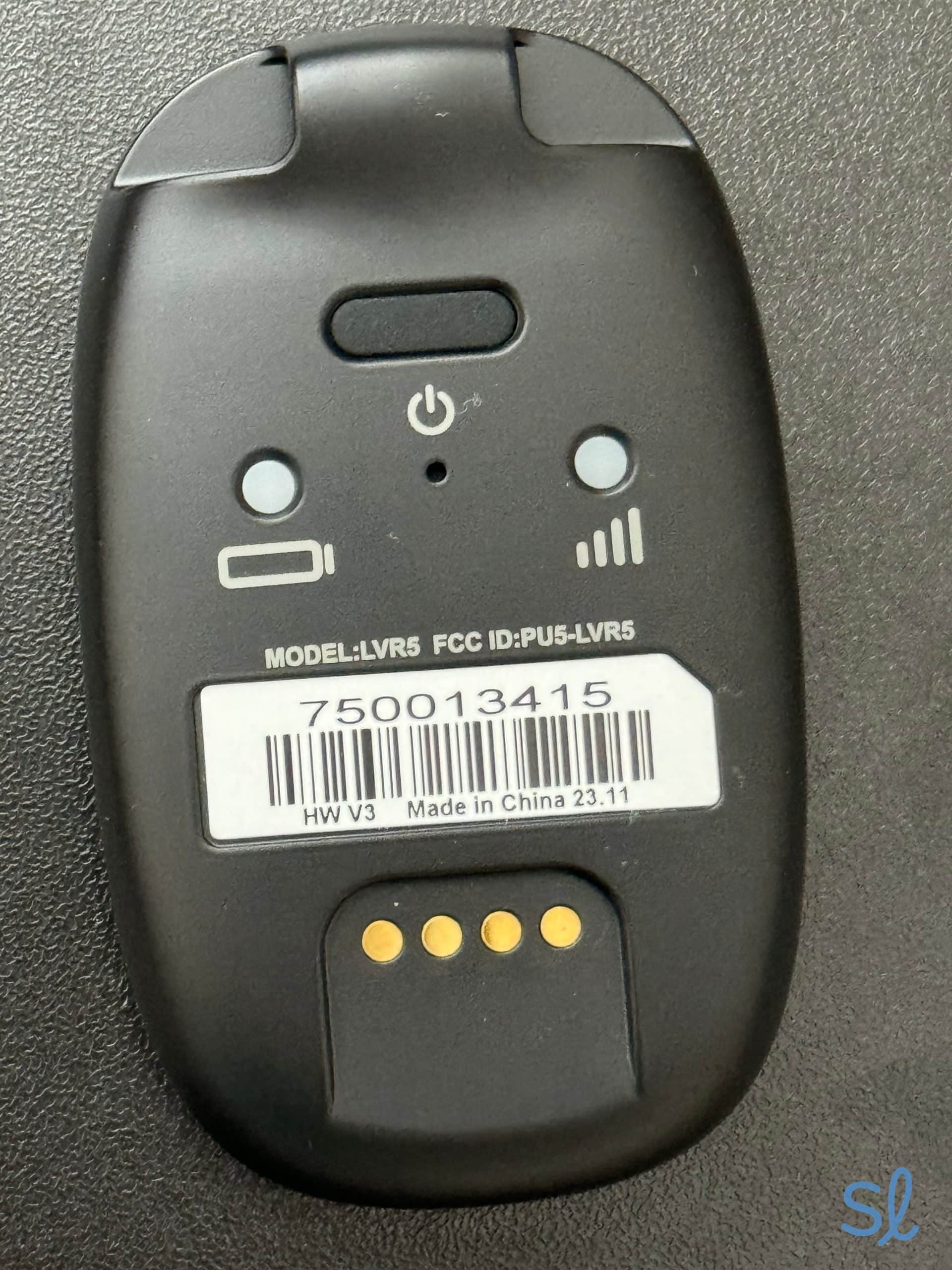
Viewing the buttons on the back of the Lively Mobile2
The battery indicator flashes green when the battery is good. If it flashes amber, your battery is low. If it’s flashing red, it needs to be charged. There is also a service indicator on the back of the device. When it flashes green, that means your device is ready to use.
To test the system’s status, I returned the device to the charging dock and pressed the Health Check button on the right side of the charging dock. By doing this, I confirmed that the battery, network connection, and fall detection were working properly. The button began flashing an amber light. After a few seconds, the prompt said, “Your device is ready to use and fall detection is enabled.” I’d recommend using the Health Check button occasionally to ensure everything is working properly.
Wearing the Device
I first wore the Lively Mobile2 attached to my belt using the clip that came in my package. I simply slid the device into the clip accessory, and it snapped in. The clip grasps your shirt or you can attach it to your pants pocket, belt, or purse. It’s very lightweight, and I barely noticed it!
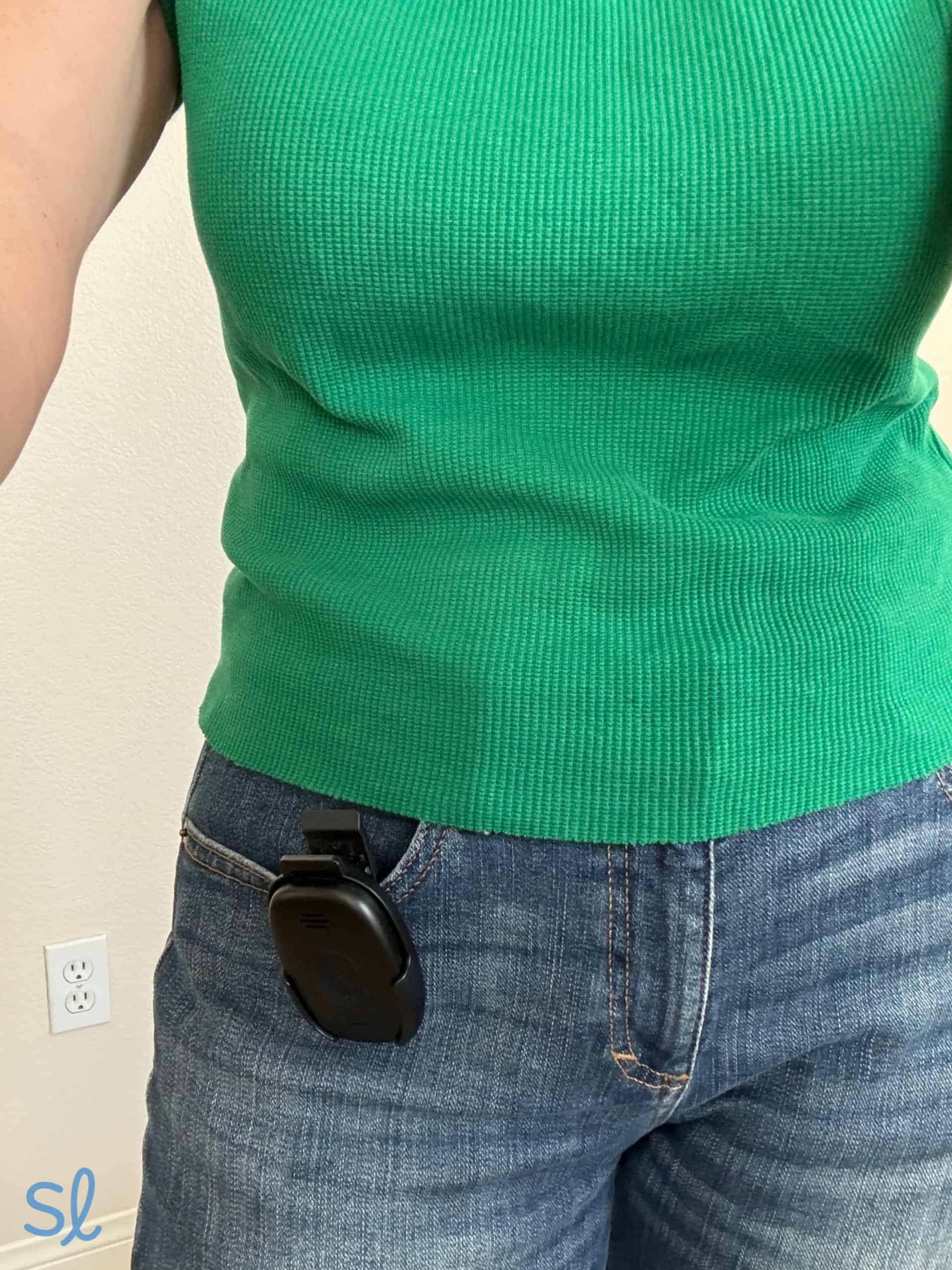
Wearing the Lively Mobile2 using the belt clip
Keep in mind, however, that the fall-detection feature is disabled when you use the clip accessory. I didn’t realize that when I first tested the system. To use automatic fall detection, I had to wear the device on a lanyard.
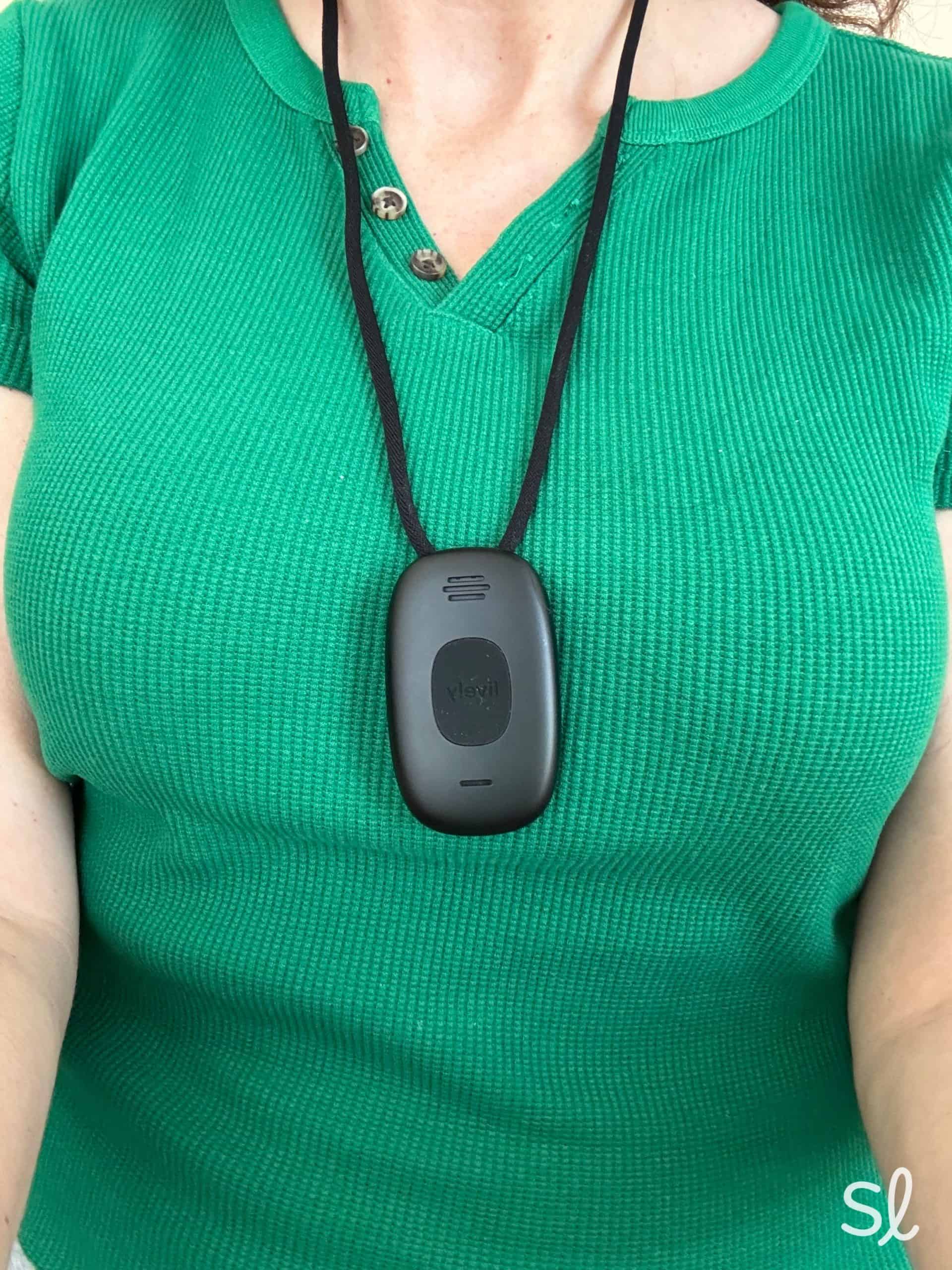
Wearing the Lively Mobile2
The Lively Mobile2 is also waterproof, meaning you can wear it in the shower. Many falls happen in the bathroom, so I was pleased to see that!
Placing a Call
It was very easy to call for help. The system comes with 24/7 access to Lively Urgent Response agents. I pushed the large, black button in the center of the device to make a call. I heard, “Calling Urgent Response,” and a Lively agent answered my call after about 10 seconds. That’s pretty fast compared to the industry average of 15 to 45 seconds.
The reception wasn’t clear during my call, though. I briefly spoke to the agent using the device’s two-way speaker, and then I ended the call. After about a minute, I pressed the button again and spoke with a different agent. This time, the reception was clearer and louder than the first call. The agent noted that I had just called and asked me if everything was all right. I explained the situation, and he was very patient and helpful. The agent confirmed my location using GPS, evaluated my situation, and asked if I needed assistance.
I ended the call by pushing the device’s help button again. The system announced: “Call ended.” If you accidentally hit the button, don’t worry! You can cancel it right away by pushing the button again.
Service and Monitoring
Whether it's an emergency or you just need help managing your prescriptions, help is a call button away. Lively’s Urgent Response team is U.S.-based and available 24/7, just like Medical Guardian’s response team. The Lively Mobile2 runs on Verizon’s cellular service. Before purchasing, make sure Verizon has reliable coverage where you live.
The Lively Mobile2 also has GPS tracking, so first responders can pinpoint your location when sending help. During my first few calls, Lively’s response agents had a hard time pinpointing my location. Since finding your exact location is essential in an emergency, that’s worth noting.
Current Deal: Right now, Lively devices are 50 percent off, and plans start as low as $19.99 per month for your first three months!
Fall Detection
The Lively Mobile2 offers fall detection as an add-on for $9.99 per month, which is a pretty standard price for medical alert systems.. The feature is designed to detect falls and immediately notify Lively’s Urgent Response agents and family members to get you the help you need. Fall detection is designed to call for help even if you cannot push the button.
It’s important to note that the fall-detection feature was disabled when I mistakenly used it while still in the clip accessory. If you opt for fall detection, you’ll need to wear the system as a necklace with the lanyard provided. The lanyard is probably the best option, as it is less noticeable and less likely to be misplaced. If you lose your device, though, the Lively Link app can help you locate it.
Testing out the Lively Link app's location tracking feature
I tested the fall detection by dropping my system on the floor. That made the system beep twice, and a voice said, “Fall detection has detected that you may have dropped your device.” It then instructed me to push the call button if I was actually having an emergency. It did not automatically call Urgent Response, which was disappointing. That means if I fell and was unable to press the help button, the device would not have called for help without the confirmation.
I realized I may need to simulate an actual fall — rather than just dropping my device — to make the feature work. I placed some couch cushions on the ground and “fell” onto them. It was quite an odd experience, but it worked! The system detected my fall and automatically called the Urgent Response center. Every once in a while, the system thought I had experienced a fall when I hadn’t, which was a small nuisance. It’s something our team has experienced with other providers we’ve reviewed, including Medical Guardian. Luckily, I could easily cancel the call by pressing the system’s help button.

Contracts and Warranty
Unlike other companies that offer quarterly or annual discounts, Lively offers only a monthly payment option. That’s fine by me, since it has no long-term contracts and offers free cancellation.
Did You Know? If you aren’t satisfied with your Lively product, you have 30 days to return it for a full refund.
Lively also provides a one-year limited warranty with all devices. During the warranty period, Lively will cover the device, rechargeable batteries, and other accessories. That warranty is rather short for a medical alert — some providers offer lifetime warranties — but one-year warranties are pretty standard in the cell phone world. Remember, the warranty protects the items undergoing normal use and does not cover damage caused by accidents or incorrect use.
Lively Mobile2 Plans and Features
Lively’s packages offer medical alerts and health features that other companies don’t. Below is a breakdown of each package, along with automatic fall detection.
| Package | Price | Features |
|---|---|---|
| Basic | $24.99 per month |
|
| Premium | $34.99 per month |
|
| Fall Detection | $9.99 per month | Automatically detects falls |
Want to learn more about the features listed above? Let’s take a look.
Lively Urgent Response
This feature connects you 24/7 to agents certified by the International Academy of Emergency Dispatch1 — the same organization that certifies 911 operators. The agents will already be familiar with your personal health information, so they can send the right help as quickly as possible.
Nurse On-Call
In partnership with Fonemed and MDLive,2 the app lets you communicate with registered nurses and board-certified doctors, making it easy to receive prescription refills and critical medical advice. It will save you the time and energy of making a trip to the doctor’s office or frantically searching the internet for answers.
Lively Link
The mobile app keeps caregivers and loved ones informed at all times. When I called Urgent Response on the Lively Mobile2, for instance, Lively sent an instant update to the Lively Link app on my phone. That ensures that loved ones stay informed. Through the mobile app, I could also:
- View an emergency call history
- Locate my device if I misplaced it
- Check the system’s battery level
- See if the device was turned off
- View a daily summary of my activities based on the known locations set up in my personal emergency profile
Lively Care Advocate
Users can build a customized plan to meet their health and well-being goals with expert assistance.
Ask Lively
This concierge-like service helps with non-emergency situations, such as contacting a caregiver, requesting directions, or looking up a phone number.
Fall Detection
This service detects falls and immediately calls an Urgent Response agent to send help. I think the feature is essential, since one in four older adults experiences a fall every year in the U.S. Fall detection costs an additional $9.99 per month.
Pro Tip: If fall detection is important to you, check out our guide to the best medical alert systems with fall detection.
Lively App
If you’re interested in Lively’s health and safety features but you don’t want to purchase a new device, the Lively mobile app is a great option. You can download the app on an iPhone, Apple Watch, or Alexa-enabled device, and access most of Lively’s health and safety features. You’ll just need to sign up for a health and safety package on the Lively website. For a more guided experience, there’s the option to follow the prompts on the Lively app to sign up for any package and then use the Lively app on your iPhone, Alexa device, or Apple Watch.
Lively Mobile2 vs. Lively Mobile Plus
Lively Mobile2 is an improvement on its predecessor, the $49.99 Lively Mobile Plus. The Mobile2 costs $30 more, but the monthly plan pricing remains the same. The new version has a lightweight design that’s smoother and sleeker. It’s about half the length of a ballpoint pen.
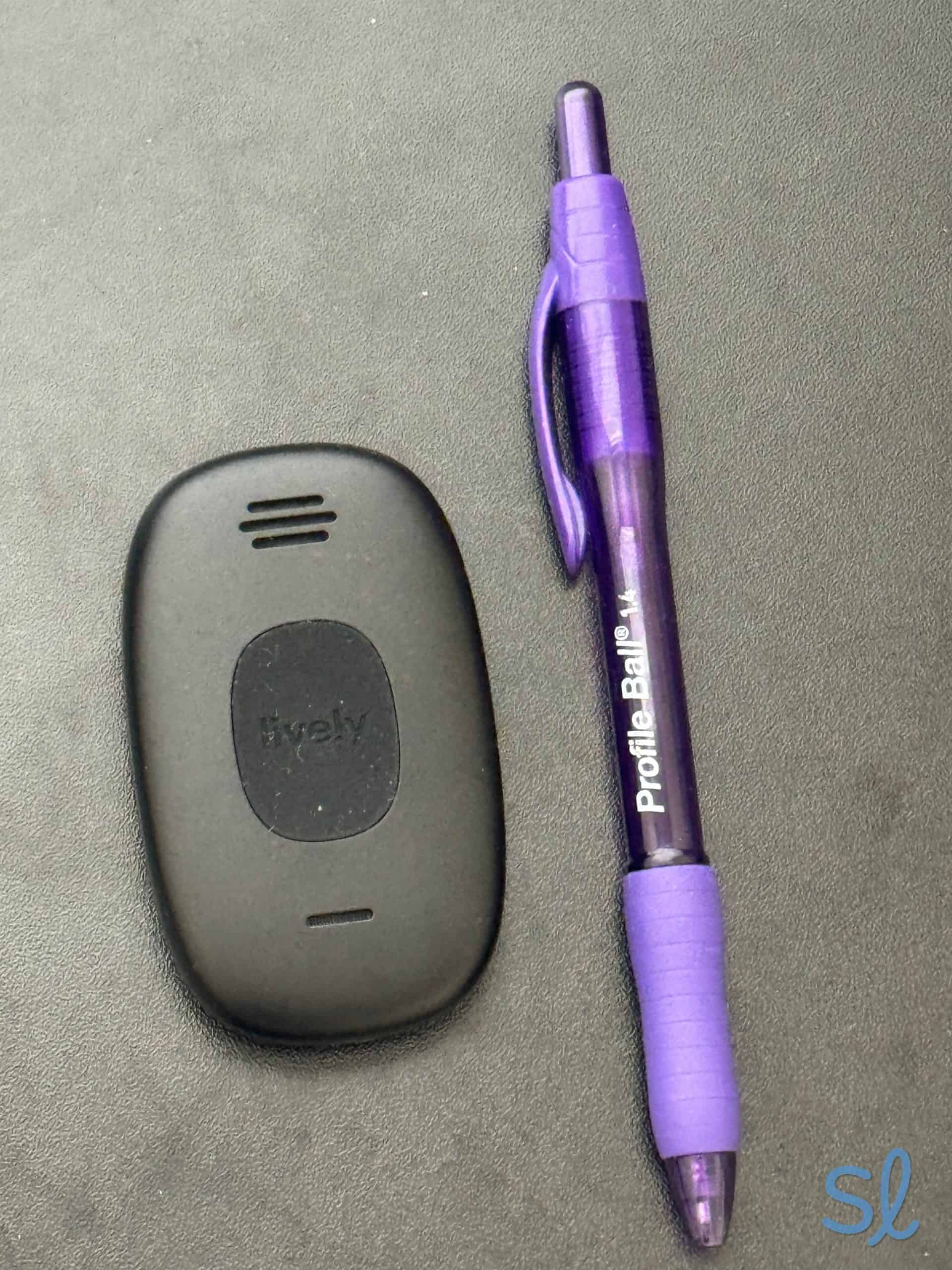
The Lively Mobile2 is small and sleek compared to its predecessor.
The Lively Mobile Plus was somewhat of an eyesore. It was silver, shiny, and square, so it really stood out. The Lively Mobile2 is smaller. It’s also matte black, which blends in better with whatever you’re wearing.
A major design difference is that the Lively Mobile2 now has features on the back of the device instead of the front. The battery and service indicators, for example, were located on the front of the Lively Mobile Plus. Now they’re on the back. There’s also a new Health Check button on a much sturdier charging dock. I could test the system’s status at any time with the Health Check button. The only thing on the front of the device is a single, large call button, which makes it easy and convenient to use.
Lively Video Review
This review is full of prices, products, and other particulars from Lively, but you can get a hands-on look at the company’s medical alert systems in our Lively video review below. You’ll see all the Lively devices discussed in this review and hear additional information about how they work and stack up to competitors.
Lively vs. Other Medical Alert Providers
Lively’s medical alert system, the Mobile2, has several great features. Lively is also one of the few medical alert companies that offers medical alert phones. To make an informed decision, though, it’s always good to consider other products on the market. Here is a brief review of how Lively stacks up against other devices.
Lively vs. Bay Alarm Medical
Bay Alarm Medical has affordable systems starting at just $27.95 per month, a few dollars more than Lively’s base rates. Bay Alarm Medical’s lineup includes in-home systems, mobile devices (similar to the Mobile2), and a smartwatch. Lively, on the other hand, offers only a mobile medical alert system and phones. If you’re looking for an in-home system or a smartwatch that can track your health, Bay Alarm Medical may be a better option.

Our team found that Bay Alarm Medical’s typical response time was around 20 seconds. That’s twice as long as the Lively Mobile2’s 10-second response time. Both companies offer fall detection and a companion mobile app. Bay Alarm Medical offers a 30-day risk-free trial and a price-lock guarantee, but Lively doesn’t.
You can read our Bay Alarm Medical review to learn more.
Lively vs. Medical Guardian
Medical Guardian has a variety of high-tech systems. Plan prices start at $32.95, which is $8 higher than Lively’s starting rates. Medical Guardian offers five in-home and on-the-go packages, all with optional fall detection. Customers have a choice of several high-tech mobile systems. MGMove, for example, is a smartwatch that lets you send text messages, set calendar notifications, and track the device’s location. If you’re looking for more advanced or customizable systems, Medical Guardian is a great choice.
Lively, on the other hand, offers one simple mobile device without bells and whistles. It sticks to the basics, making it ideal or older adults who don’t want anything too advanced. Most Medical Guardian devices have an average response time of 15 seconds, which is five seconds slower than Lively Mobile2’s response time.
Check out our Lively vs. Medical Guardian comparison guide for more details.
Lively vs. MobileHelp
MobileHelp offers two-for-one systems that can be used by two people at one affordable rate. Starting at $24.95 a month, MobileHelp’s alert systems are made for both at-home and on-the-go use. Like Lively, MobileHelp has a 24/7 U.S.-based professional monitoring center, but its monitoring center is not company-owned.
Cheaper than Lively, you can add fall detection for a $5.50 monthly fee. MobileHelp has a response time of around 25-30 seconds on average, which is longer than Lively’s 10-second response time. That’s something to consider, since every second counts in an emergency. You can read our latest MobileHelp review to learn more.
Compare Lively to Other Providers
The Bottom Line on Lively
I found that the Lively Mobile2 is a simple, lightweight medical alert system that does its job. If you want easy access to an Urgent Response team 24/7, Lively Mobile2 fits the bill. Lively’s agents were friendly and happy to assist me whenever I called. I’m also a big fan of the Lively Link app, which sends notifications and status updates to loved ones. For many older adults and caregivers, that extra security can bring peace of mind.
If you want a more high-tech system, such as a medical alert watch or an at-home medical alert system, you’ll want to consider other providers. If you prefer a system that’s user-friendly, easy to set up, and relatively affordable, the Lively Mobile2 is worth considering.
Frequently Asked Questions About Lively
-
How much do Lively medical alert systems cost?
Equipment and service fees for Lively will vary based on the product and add-on package you sign up for. Up-front equipment fees range from $79.99 to $119.99, while health and safety packages cost anywhere from $24.99 to $49.99 per month.
-
Can you keep the same number when you switch to a Lively phone?
Yes, you can keep your same phone number when you switch to a Lively phone. It is important to mention that you should not cancel your original service plan until the number transfer is complete.
-
How is Lively Urgent Response different from calling 911?
Lively Urgent Response agents have access to your personal profile, which contains pertinent confidential information that the agents can use to dispatch appropriate assistance when needed. The personal profile is customizable, so you can share information to help Lively agents understand your unique needs or concerns.
-
Does Lively require a contract?
Unlike most cell phone companies, Lively does not require a long-term contract. This means you can end your service at any time without cancellation fees.
-
Does the Jitterbug Smart4 have GPS?
Yes. Seniors who are still getting behind the wheel can access the Google Maps app on their Jitterbug Smart4 for turn-by-turn directions. The GPS feature on all four of Lively’s devices also allows urgent response operators to pinpoint your location in an emergency.
-
International Academies of Emergency Dispatch (IAED). (n.d.). Optimizing Emergency Dispatch for Success.
-
Lively. (n.d.). Premium Plan for Phones.




